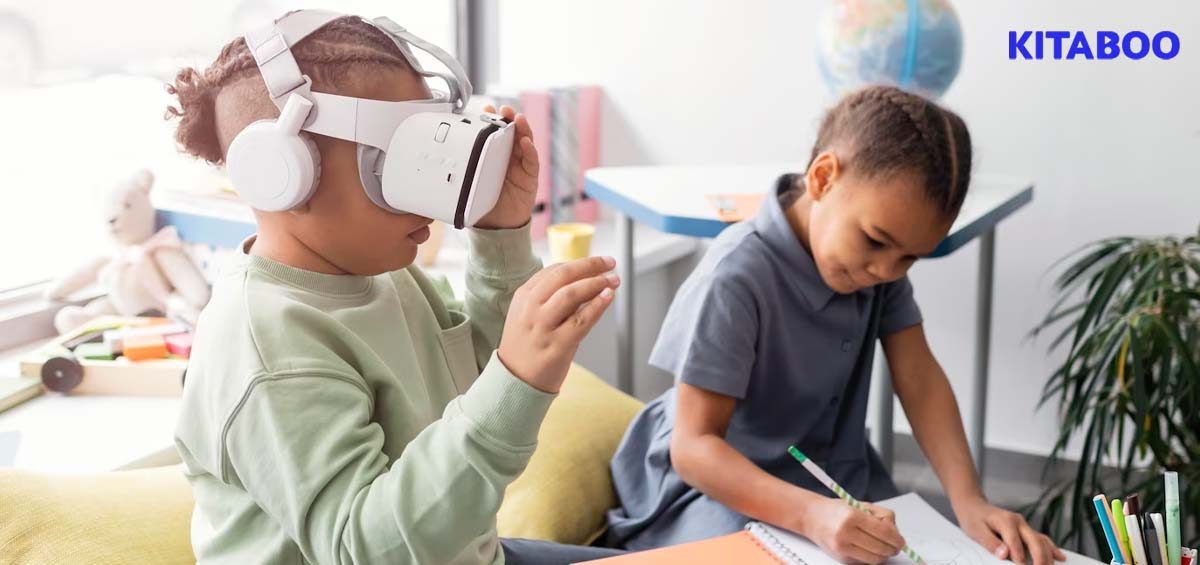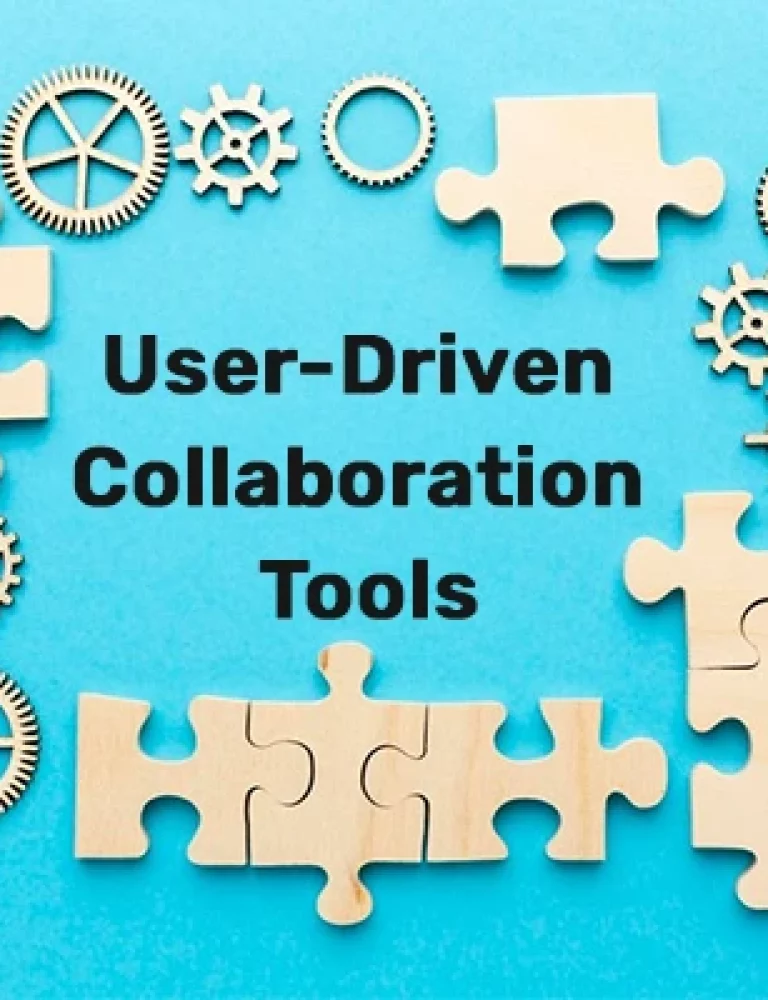Research shows that the number of projected AR device users will reach 1.4 billion by the end of 2024.
Although the numbers are huge, most people still use it primarily for recreational purposes, e.g., gaming and entertainment. But, the potential of this cutting-edge technology is far greater. In many crucial sectors, like healthcare, finance, training, commerce, and marketing, the prowess of AR can be used to improve efficacy and bring a much-needed change.
Especially in the education sector, Augmented Reality can improve the whole system and transform teaching methods, making learning an interesting and engaging activity.
Learn how Augmented Reality in education can revamp K12 education and make it more relevant for the upcoming digital age and how you can embrace it with digital textbook platforms like KITABOO. Let’s dive in!
Table of Contents
I. What is Augmented Reality (AR)?
II. Challenges Associated with Traditional K12 Education
- One-Size-Fits-All Approach
- Monotonous Teaching
- No Real-World Relevance
- Zero Flexibility
- Limited Accessibility
III. Augmented Reality in Education: Which Aspects are Expected to Revamp?
- Enhanced Personalization
- Increased Engagement
- Better Concept Understanding
- Improved Flexibility
- Amplified Accessibility
IV. Wrapping Up
What is Augmented Reality (AR)?
Augmented Reality (AR) refers to the technology that combines digital and real-world elements to improve learning and understanding of different concepts. It gives us an advanced sensory experience of what we see, hear, and feel by overlaying virtual sounds, data, or objects to a real environment (think: Pokémon GO).
AR technology relies on digital devices like smartphones, laptops, tablets, headsets, smart glasses, smart watches, etc., to function and deliver results.
In the world of education, it has distinguished significance. If leveraged properly, this futuristic technology will revolutionize education, especially the building blocks, i.e., K12.
Challenges Associated with Traditional K12 Education
Traditionally, the K12 learning system faces several challenges. These drawbacks might seem small. But in reality, they sum up to make the entire education system inefficient. For instance, here are a few of its setbacks:
One-Size-Fits-All Approach
As a single teacher, it’s humanly impossible to tailor-make every concept to make it personally comprehensible for each student. This is why conventional K12 teaching is based on a generic approach. However, this methodology is one of its biggest limitations as it makes the entire learning process difficult, especially for disabled students, academically weak students, and students with different learning styles.
Monotonous Teaching
A by-product of the generic teaching method is monotony. Traditional K12 teaching is very much limited to whiteboards, notebooks, and lectures. For students, this repetitive nature of learning ends up becoming dull and boring. Over a period of time, it causes the student engagement rate to drop enormously. Even testing in a traditional pen-and-paper format can become monotonous and display inaccurate results compared to students’ actual understanding.
No Real-world Relevance
Traditional K12 education is bookish in nature. In most scenarios, there are no real-world instances or references to supplement a student’s understanding and help them fully grasp a concept. This lack of relevance to their daily studies makes learning impractical.
Zero Flexibility
Classic K12 education is strictly classroom-bound. There is no flexibility of time or place, making it difficult for students with diverse needs to acquire the same level and quality of education. As a result, it turns out to be highly restrictive and hindering.
Limited Accessibility
Standard K12 learning is rigid and, at its core, only suitable for students who are able – physically and mentally. On many levels, it fails to meet the needs of students with disabilities and challenges. This restricted accessibility is another limitation that needs to be checked in traditional K12 education.
Augmented Reality in Education: Which Aspects are Expected to Revamp?
We know – K12 education has much room for improvement. But is Augmented Reality (AR) really the solution? If so, what aspects of education can AR enhance to make learning more engaging and effective?
Enhanced Personalization
In the field of education, AR has the potential to instill the magic of personalization. That is, by adapting educational content to the specific needs of students. This technology is adept at understanding students’ requirements by tracking their AI-driven algorithm. This way, it makes learning personalized and highly effective.
Increased Engagement
As Augmented Reality in education personalizes learning, engagement simultaneously increases. This technology can infuse interactive features in content like highlighted texts, annotations, and bookmarks – just like KITABOO. This not only makes learning easy but also significantly improves student engagement, satisfaction, and knowledge retention.
Better Concept Understanding
Augmented Reality overlays digital content (like graphs, written text, etc.) onto everyday real-world elements like a table, whiteboard, book – just anything – to elaborate on it. This way, learning and grasping new concepts become a cakewalk as real-world relevance is now associated with everything taught.
Improved Flexibility
Augmented Reality in education is all about introducing more flexibility in learning. A student engaged in multiple endeavors can resort to AR for learning concepts at their own pace and pleasure. This unhindered flexibility facilitates seamless learning 24/7.
Amplified Accessibility
Accessibility is also highly enhanced when Augmented Reality in education is used correctly. After all, digital textbook platforms incorporating AR, like KITABOO, include features like text-to-speech, voice commands, and other useful functions to make learning more practical for all students. This improved accessibility is a major advantage.
Wrapping Up
Augmented Reality in education is still very much a work in progress. Yet, as it’s an essential element that will be shaping the future of education in the coming years, you must stay aware of its many possibilities. There’s no denying that AR will become the stepping stone of a digital renaissance in K12 education in a few years.
In this blog, we discussed how introducing Augmented Reality in the classroom can change the face of K12 education.
For more interactive, futuristic content and solutions, check out KITABOO now!
To know more, please write to us at KITABOO@hurix.com.
Suggested Reads:
Discover How An Ebook Conversion, Publishing & Distribution Platform Can Help You
Kitaboo is a cloud-based content platform to create-publish & securely distribute interactive mobile-ready ebooks.
You May Also Like








